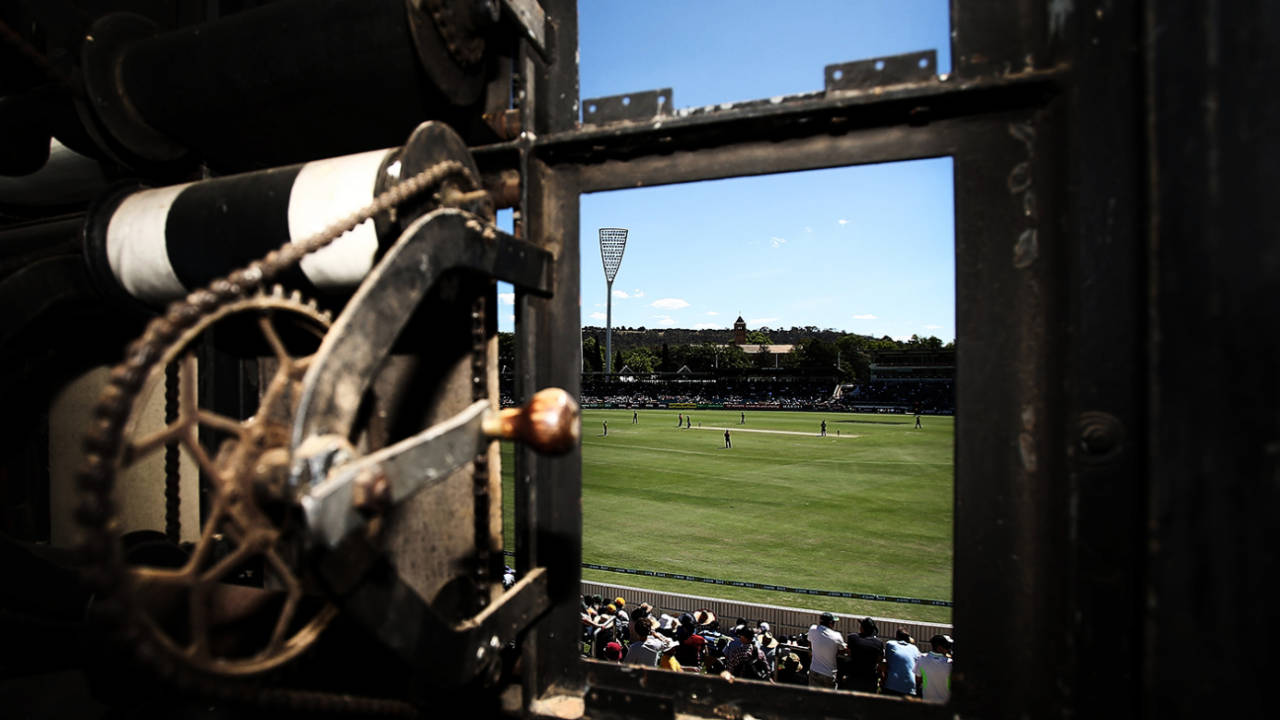How long exactly before February 1, 2019 had Canberra's custodians been hopeful of hosting a Test match at Manuka Oval? About 36 years, in fact.
The answer has been unearthed in archival material located at the Melbourne Cricket Club, which in 1982 had donated the MCG's venerable manual scoreboard to Manuka Oval after the decision to upgrade to an electronic model.
Committed to Manuka by the MCC's then secretary and former Australia captain
Ian Johnson, the scoreboard was soon to be named in honour of
Jack Fingleton, the former Test batsman, journalist and advocate of Canberra, who had died in 1981.
Johnson confirmed the MCC's intent to send the scoreboard to Manuka in a letter to Ray Donnellan, assistant secretary of recreation and tourism for the ACT, on August 6, 1982: "The replacement was not done lightly because the old board has such a wonderful history dating back to 1901, and has all Test and international matches played in Melbourne since that time.
"We are delighted to hear that you have agreed to accept our offer as it would have been unfortunate if what, in many respects, has become a national sporting monument, would have been lost to posterity.
"There is no more appropriate place for it to be housed than in the national capital. Needless to say, despite its age and history, it remains the best cricket scoreboard in the world."
In response, the minister for the ACT Michael Hodgman not only announced that the scoreboard would be named after Fingleton, but also that it marked a step in the goal of the territory to ultimately host a Test match - referencing the Ashes series to be played between Australia and England in the subsequent summer.
"This scoreboard is part of our continual upgrading of Manuka Oval," Hodgman said. "Eventually, after improvement of concessions and broadcasting we may even see the Ashes played right here in the national capital.
"It brings a touch of history to Australian cricket in the heart of a nation of cricket heroes. This monument to the great sportsmen of our past links Manuka Oval with the nation's most glorious sporting achievements."
"Eventually", of course, turned out to be more than three decades later. Nor was the scoreboard's passage from Melbourne to Canberra a smooth one - as original cost estimates for transporting it blew out from an initial AUD 60,000 to AUD 110,000.
Nevertheless, Johnson concluded the tale by writing to Hodgman on January 26, 1983 - two days after the scoreboard was formally unveiled at the start of a match featuring the touring New Zealand side. Whereas the bean counters had been wayward in figuring out the cost of relocation, the scoreboard's new operators had been rather more precise.
"It was a most pleasant ceremony and the setting for the board is as near perfect as possible," Johnson wrote. "The operators of the board also did an excellent job and, to my knowledge, did not make a mistake."
Johnson retired as MCC secretary less than a month later; Hodgman would depart his role as ACT Minister with the defeat of Malcolm Fraser's Liberal government by Bob Hawke and the Labor Party later that same year. His son, Will Hodgman, is now the Premier of Tasmania.
Daniel Brettig is an assistant editor at ESPNcricinfo. @danbrettig
